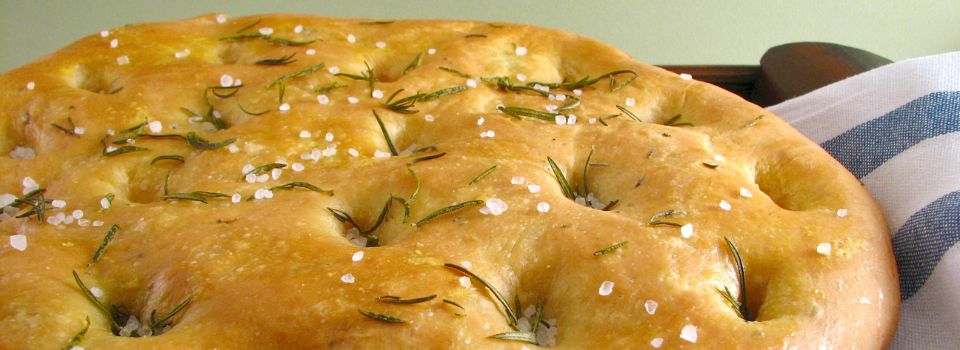Ligurian Focaccia – by Samin Nosrat
One of the best books I have read in the past 5 years is not your standard fiction or non-fiction book. It is a cookbook. Yes, I read a cookbook almost cover to cover. Salt Fat Acid Heat is one of the best cooking primers and cookbooks I have encountered because it doesn’t simply have a series of recipes. Instead, author Samin Nosrat digs into the core fundamentals of cooking. She talks about how salt, fat, acid and heat are the most important parts of understanding how to cook. She (and her illustrator) are masters at explaining in words, graphs, fun visuals and charts how these four fundamental elements interact with ingredients to bring flavors and textures to life.
The book was so successful that Nosrat was recruited to create a Netflix 4 part series. The show is not as good as the book (of course…) in that it isn’t as educational. Instead, it uses those four core fundamentals to travel the world and create a travel and food series. Out of each episode a number of recipes come alive as she meets with various characters. The recipe below for Ligurian focaccia comes from the episode about “Fat” – which is based in Italy. The recipe brings in salt as an important protagonist as well.
For the dough:
- 2½ cups (600 grams) lukewarm water
- ½ teaspoon active dry yeast
- 2½ teaspoons (15 grams) honey
- 5 1/3 cups (800 grams) all-purpose flour
- 2 tablespoons (18 grams) Diamond Crystal Kosher salt or 1 tablespoon fine sea salt
- ¼ cup (50 grams) extra-virgin olive oil, plus more for pan and finishing
- Flaky salt for finishing
For the brine:
- 1½ teaspoons (5 grams) Diamond Crystal Kosher Salt
- ⅓ cup (80 grams) lukewarm water
Refer to the chart in the book for salt equivalencies.
Instructions:
In a medium bowl, stir together water, yeast, and honey to dissolve. In a very large bowl, whisk flour and salt together to combine and then add yeast mixture and olive oil. Stir with a rubber spatula until just incorporated, then scrape the sides of the bowl clean and cover with plastic wrap. Leave out at room temperature to ferment for 12 to 14 hours until at least doubled in volume.
Spread 2 to 3 tablespoons oil evenly onto a 18-by-13 inch (46-by-33 cm) rimmed baking sheet. When dough is ready, use a spatula or your hand to release it from the sides of the bowl and fold it onto itself gently, then pour out onto pan. Pour an additional 2 tablespoons of olive oil over dough and gently spread across. Gently stretch the dough to the edge of the sheet by placing your hands underneath and pulling outward. The dough will shrink a bit, so repeat stretching once or twice over the course of 30 minutes to ensure dough remains stretched.
Dimple the dough by pressing the pads of your first three fingers in at an angle. Make the brine by stirring together salt and water until salt is dissolved. Pour the brine over the dough to fill dimples. Proof focaccia for 45 minutes until the dough is light and bubbly.
Thirty minutes into this final proof, adjust rack to center position and preheat oven to 450°F (235°C). If you have a baking stone, place it on rack. Otherwise, invert another sturdy baking sheet and place on rack. Allow to preheat with the oven until very hot, before proceeding with baking.
Sprinkle focaccia with flaky salt. Bake for 25 to 30 minutes directly on top of stone or inverted pan until bottom crust is crisp and golden brown when checked with a metal spatula. To finish browning top crust, place focaccia on upper rack and bake for 5 to 7 minutes more. Remove from oven and brush or douse with 2 to 3 tablespoons oil over the whole surface (don’t worry if the olive pools in pockets, it will absorb as it sits). Let cool for 5 minutes, then release focaccia from pan with metal spatula and transfer to a cooling rack to cool completely.
Serve warm or at room temperature.
To store, wrap in parchment and then keep in an airtight bag or container to preserve texture. Gently toast or reheat any leftover focaccia before serving. Alternatively, wrap tightly to freeze, then defrost and reheat before serving.
Source: https://www.saltfatacidheat.com/fat/ligurian-focaccia


